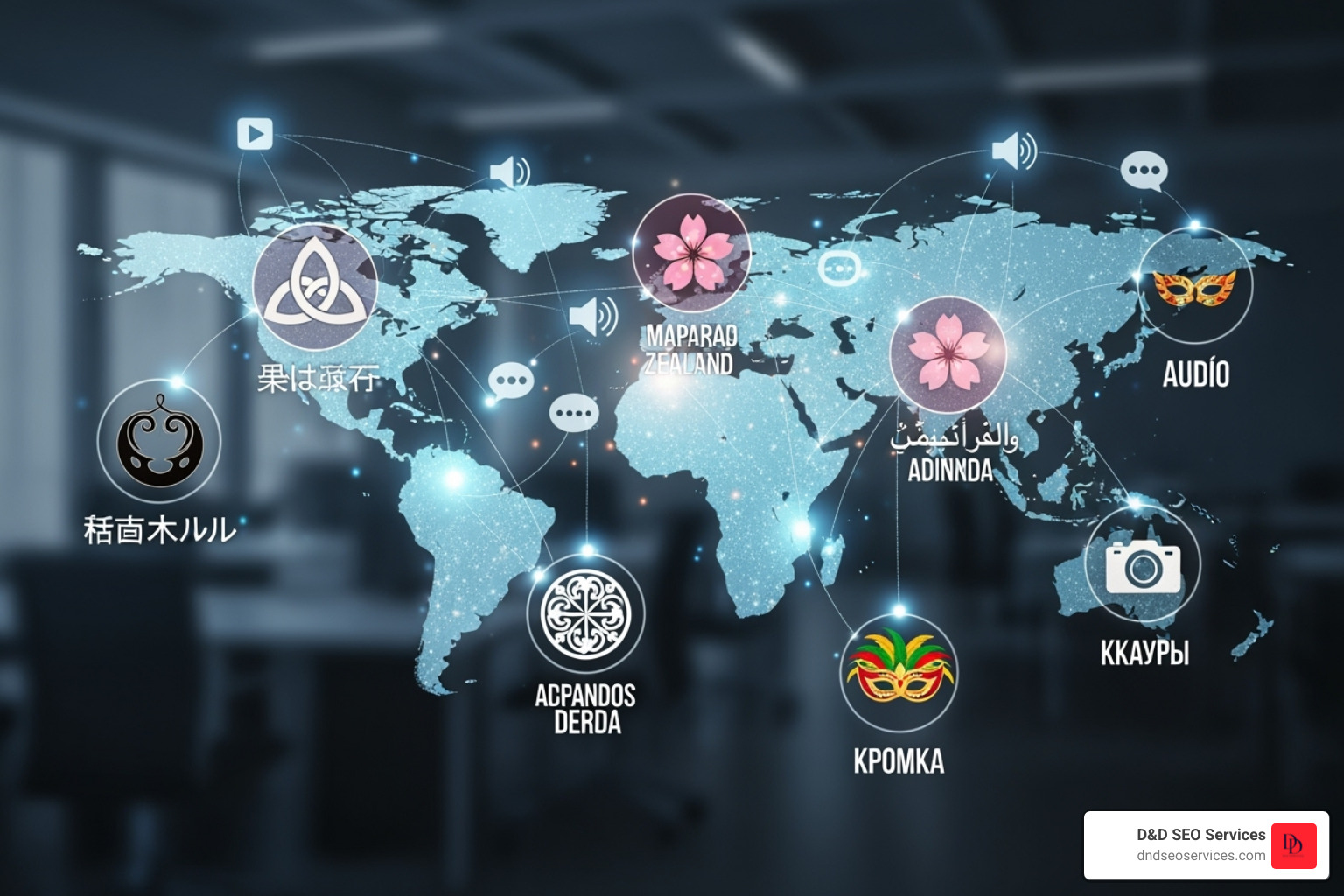The Dawn of the Answer Engine Era
From search to answer engines: How to optimize for the next era of findy represents the biggest shift in information retrieval since Google’s inception. Here’s what you need to know:
Key Changes:
- Traditional search provides lists of links to explore
- Answer engines synthesize information into direct responses
- AI tools like ChatGPT and Perplexity now handle 60% of informational queries
- Zero-click searches account for 58% of all Google searches in 2024
- Conversational queries average 23 words vs. traditional search’s 4 words
Optimization Strategy:
- Create direct answers in Q&A format
- Use structured data and semantic markup
- Build topical authority through comprehensive coverage
- Optimize for citations rather than just clicks
- Focus on E-E-A-T (Experience, Expertise, Authoritativeness, Trustworthiness)
The shift is dramatic. In April 2025, ChatGPT reached 5.14 billion visits – a 182% year-over-year increase. Meanwhile, Gartner predicts traditional search volume will drop 25% by 2026 as AI chatbots absorb more queries.
This isn’t just about new technology. It’s about how people find information. Instead of clicking through multiple websites, users now expect AI to synthesize answers from various sources and present them conversationally.
For local businesses, this creates both challenges and opportunities. The challenge? Your website might receive fewer direct visits even if you rank well. The opportunity? Becoming the cited source in AI responses can establish incredible authority and trust.
The stakes are clear: adapt your content strategy now, or risk invisibility in the next era of findy.
I’m Danielle Birriel, founder of D&D SEO Services, and I’ve spent over 12 years helping local businesses steer search evolution – from keyword-centric tactics to today’s sophisticated AI-driven landscape. My expertise in from search to answer engines: how to optimize for the next era of findy comes from successfully adapting hundreds of local business strategies for AI Overviews, semantic relevance, and conversational search queries. Let me guide you through this change with proven strategies that turn AI visibility into measurable business growth.
Simple From search to answer engines: How to optimize for the next era of findy word guide:
- ChatGPT, Perplexity, and Google Gemini: How AI is Reshaping Local Search Behavior
- optimizing for ai search
- Google Semantic Search Using Entity SEO
The Paradigm Shift: From Search Engines to Answer Engines
Remember the last time you searched for something online? You probably typed a few words into Google, scrolled through blue links, and clicked around until you found what you needed. That familiar dance is rapidly becoming a thing of the past.
We’re witnessing something remarkable: the change from search to answer engines: How to optimize for the next era of findy. It’s not just a small update to how we find information online—it’s a complete reimagining of the entire process.
Think about it this way. Traditional search engines were like librarians who handed you a list of books that might contain your answer. Answer engines are more like knowledgeable friends who actually read all those books and give you the answer directly, complete with references.
This shift is happening fast. AI-powered platforms like ChatGPT, Perplexity, and Google’s Gemini now handle a whopping 60% of informational queries. People are asking longer, more conversational questions too—averaging 23 words compared to the traditional 4-word searches we’re used to.
The numbers tell a compelling story. Gartner predicts search volume will drop 25% by 2026 as AI chatbots absorb more queries. Instead of clicking through multiple websites, users now expect immediate, synthesized answers delivered conversationally.
For businesses, this creates both exciting opportunities and real challenges. The challenge? Your website might see fewer direct visits even when you rank well. The opportunity? Becoming the cited source in AI responses can establish incredible authority and trust with potential customers.
Understanding The Future of AI-Driven Search Optimization isn’t just helpful—it’s essential for staying visible in this new landscape.
How AI Models Process Information Differently
Here’s where things get really interesting. AI models don’t just crawl web pages looking for matching keywords like traditional search engines do. They actually understand what they’re reading.
Traditional search engines work like sophisticated filing systems. They catalog keywords, count links, and match your query to documents that contain similar terms. AI models take a completely different approach—they use semantic understanding and self-attention mechanisms to grasp the meaning behind your words.
Let’s say someone searches for “best running shoes for flat feet.” A traditional search engine looks for pages containing those exact words. An AI model, however, connects the dots between biomechanical impacts, midsole technologies, wear patterns, and real user experiences. It synthesizes all this information into a comprehensive answer.
This is because AI models learn from massive datasets—we’re talking trillions of pieces of information. They understand contextual relationships between concepts, recognize synonyms, and can even pick up on subtle nuances in language. Instead of just keyword counting, they focus on data synthesis and delivering meaningful conclusions.
This deeper understanding is exactly what Semantic SEO: Complete Guide to Rank Higher on Search Results explores in detail.
Why AEO is Crucial for Brand Visibility
The rise of answer engines is creating some eye-opening changes in user behavior. Zero-click searches now account for 58% of all Google searches in 2024. That means more than half the time, people get their answers without ever clicking on a website.
Even more striking? Queries with AI Overviews see a 15.5% drop in traditional organic clicks. About 80% of searchers now rely on zero-click results for at least 40% of their searches. This trend is reducing overall organic web traffic by an estimated 15% to 25%.
Let that sink in for a moment. Even if your website ranks #1 on Google, users might get their answer from an AI summary without ever visiting your site. It’s a completely different game now.
But here’s the silver lining: becoming a cited source in AI responses can actually boost your credibility more than a traditional click ever could. When an AI model references your content as authoritative, it’s like getting a recommendation from a trusted expert.
This is why Answer Engine Optimization isn’t just another marketing buzzword—it’s a strategic necessity. We’re no longer optimizing just for clicks; we’re optimizing to be the trusted source that AI models cite when answering user questions.
The businesses that understand this shift early will have a significant first-mover advantage. Those that don’t risk becoming invisible as increased competition for AI citations intensifies.
This is exactly why investing in professional Answer Engine Optimization (AEO) Services makes sense right now. The landscape is changing rapidly, and building authority in this new environment requires a completely different approach than traditional SEO.
The future belongs to brands that can future-proof their visibility by becoming the go-to sources that AI models trust and reference. It’s not just about adapting—it’s about thriving in this new era of information findy.
From search to answer engines: How to optimize for the next era of findy with AEO
The writing is on the wall. Traditional SEO tactics aren’t going to cut it anymore. We need to completely rethink our approach and accept Answer Engine Optimization (AEO) – a strategy designed for an AI-first world.
Think about it this way: instead of competing for clicks, you’re now competing to become the trusted source that AI cites when answering questions. It’s a fundamental shift that changes everything about how we create and optimize content.
Here’s what this shift looks like in practice:
| Feature | Traditional SEO | Answer Engine Optimization (AEO) |
|---|---|---|
| Goal | Drive clicks to website, rank on SERP | Be cited as the trusted source within AI answers |
| Primary Tactic | Keyword density, backlinks, on-page optimization | Clarity, direct answers, structured data, topical authority |
| Key Metric | Click-Through Rate (CTR), organic traffic | Reference Rate, AI Share of Voice, brand mentions |
| Content Focus | Broad coverage, ranking for terms | Concise, factual answers, comprehensive topic coverage, E-E-A-T |
| User Intent | Match query to relevant pages | Understand and directly fulfill user’s need for an answer |
The difference is striking. While traditional SEO focused on getting people to your website, AEO focuses on getting your expertise into AI responses. It’s not about abandoning SEO principles – it’s about evolving them for a new reality.
Content Strategy: How to become the answer
When someone asks AI a question, you want your content to be the source it turns to. This means writing content that directly answers questions rather than dancing around topics or burying the answer deep in paragraphs.
Start with the answer first. No more lengthy introductions or fluff. If someone asks “How long does it take to see SEO results?”, lead with “Most businesses see initial SEO improvements within 3-6 months, with significant results typically appearing after 6-12 months.” Then expand on the details.
Write like you’re having a conversation. AI models are trained on conversational data, so content that feels natural and approachable performs better. Imagine explaining your topic to a smart friend over coffee – that’s the tone that works.
The Q&A format has become incredibly powerful. When you structure content as questions and direct answers, you’re essentially pre-packaging information for AI to use. FAQ sections aren’t just nice-to-have anymore – they’re strategic assets.
Clarity beats cleverness every time. Use simple language, short paragraphs, and clear explanations. If you must use industry jargon, define it immediately. AI prioritizes content that’s easy to understand and extract information from.
Building E-E-A-T (Experience, Expertise, Authoritativeness, Trustworthiness) has never been more critical. AI can’t create trust – it can only reflect the trust signals it finds in your content. Include author credentials, cite your sources, and back up claims with data. When AI sees these trust signals, it’s more likely to reference your content. Understanding User-First E-E-A-T: What Actually Drives SEO and GEO becomes essential in this context.
Original research and unique data make you irreplaceable. When you provide insights that can’t be found elsewhere, you become a primary source. AI models love citing original studies, surveys, and proprietary data because it adds credibility to their responses.
The content formats that consistently perform well in AI responses include dedicated FAQ pages that address common questions directly, step-by-step how-to guides that solve specific problems, glossaries that clearly define industry terms, data-rich reports backed by statistics and research, and comparison tables that make differences easy to understand.
Technical Optimization: Making Your Content AI-Accessible
Great content means nothing if AI can’t properly access and understand it. The technical foundation of your website needs to be rock-solid for AI consumption.
Structured data is your secret weapon. Schema markup using JSON-LD helps AI understand exactly what your content is about. When you mark up FAQs with FAQPage schema or how-to guides with HowTo schema, you’re essentially creating a roadmap for AI to follow. It’s like providing subtitles for your content – AI can extract information much more accurately.
Semantic HTML matters more than ever. Using proper HTML5 elements like <article>, <section>, and <header> gives your content inherent meaning. AI models trained on billions of web pages recognize these patterns and can better understand your content structure. Our On-Page SEO Services include comprehensive schema and semantic markup implementation.
Speed is non-negotiable. AI crawlers operate under strict time constraints. If your page doesn’t load core content within 1-5 seconds, AI simply moves on. It’s not just about ranking anymore – it’s about basic accessibility for AI systems.
Mobile-first design isn’t optional. With AI systems prioritizing mobile-optimized content, ensuring your site works flawlessly on smartphones and tablets directly impacts whether AI can properly access your information.
The emerging llms.txt standard represents the future of AI-website communication. Similar to how robots.txt guides traditional search crawlers, this new protocol will help AI systems understand how to interact with your content appropriately. While still developing, staying informed about these technical standards will be crucial. Research from sources like An academic study on AEO provides deeper insights into these technical considerations.
Building Authority and Trust for AI
In the AI era, your reputation extends far beyond your website. AI models form opinions about your brand based on your entire digital footprint, making trust-building more important than ever.
Brand mentions across the web signal credibility to AI systems. When reputable sites, forums, and social media platforms mention your brand positively, AI takes notice. This means public relations and brand reputation management become SEO strategies.
Quality backlinks still matter, but for different reasons. AI doesn’t count links like traditional search engines, but links from authoritative sources signal that experts in your field trust your content. It’s about validation rather than manipulation. Our Local Link Building Services focus on earning these meaningful connections.
Topical authority means being the go-to resource for your entire subject area, not just individual keywords. When you consistently publish comprehensive, accurate content across all aspects of your expertise, AI recognizes you as a subject matter expert worth citing.
Clear authorship and credentials help AI understand who’s behind the content. Include author bios, professional credentials, and contact information. AI systems are designed to prioritize content from identifiable experts over anonymous sources.
Content freshness keeps you relevant. AI systems often prioritize recent information, especially for topics that change frequently. Regular updates with new data, insights, and timestamps signal that your content remains accurate and valuable.
Building authority for AI requires patience and consistency. It’s about becoming genuinely valuable to your audience while making that value easily findable by AI systems. This approach naturally aligns with effective Online Reputation Management strategies.
The transition from search to answer engines: how to optimize for the next era of findy isn’t just about new tactics – it’s about becoming the trusted source that both humans and AI turn to for reliable information.
Measuring Success and Navigating the Future of AI Search
The shift to answer engines demands a fresh look at how we measure success. Those familiar metrics we’ve relied on – organic traffic and click-through rates – aren’t going anywhere. But let’s be honest: they’re not telling the whole story anymore. From search to answer engines: How to optimize for the next era of findy requires new ways to track what’s actually working.
Think about it this way: when ChatGPT cites your plumbing business as the source for “how to fix a leaky faucet,” that’s valuable exposure – even if the user never clicks through to your website. Traditional analytics would miss this completely, but your brand just got credibility in front of a potential customer.
New KPIs
Reference rates have become the gold standard for measuring AEO success. This tracks how often AI engines cite your content when answering user questions. It’s like being quoted in a newspaper, except the newspaper has millions of readers every day. A recent study showed a 1,300% surge in AI search referrals to U.S. retail sites during the 2024 holiday season. That’s not a typo – businesses that got their AEO strategy right saw massive returns.
AI share of voice takes this further by measuring your brand’s presence across all AI-generated answers in your industry. If someone asks about local restaurants, how often does your establishment get mentioned? What context surrounds that mention? This metric helps you understand not just if you’re being referenced, but how you’re being positioned.
Zero-click impact analysis might sound counterintuitive at first. After all, we want people clicking through to our websites, right? But here’s the reality: 58% of Google searches now end without a click. Users are getting their answers directly from AI summaries. The key is understanding when your content provides those answers, even without the click.
This doesn’t mean website traffic is dead. The visitors who do click through after seeing an AI summary often have stronger intent. They’re looking for deeper information or ready to take action. Our AI-Powered Local SEO Services help businesses track these evolving metrics and understand what they really mean for growth.
Emerging Trends and Future Outlook for AEO
The AI search landscape moves fast – sometimes it feels like every week brings something new. But certain patterns are emerging that smart businesses can prepare for now.
The FLIP Framework helps predict when AI assistants will search the web instead of relying on their training data. Freshness matters for current events and trending topics. Local intent drives searches for nearby businesses and services. In-depth context triggers web searches for complex, nuanced questions. Personalization kicks in when users need customized recommendations. Understanding these triggers helps you optimize content that AI will actively seek out.
AI agents are getting smarter every month. They’re moving beyond simple question-and-answer to actually helping users complete tasks. Imagine an AI agent that doesn’t just recommend your restaurant, but helps users make a reservation and provides directions. This requires structured data that these agents can act upon – product availability, service hours, booking systems.
Personalization in AI answers is ramping up quickly. The same question asked by two different users might generate different responses based on their history, location, and preferences. This means your content needs to address diverse user profiles and contexts.
Content provenance and digital watermarking are becoming crucial as AI-generated content floods the internet. Businesses that can prove their content is original and trustworthy will have a significant advantage. This is where our Generative Engine Optimization (GEO) Services help businesses stand out from the AI-generated noise.
Challenges and Opportunities for Businesses
Let’s talk honestly about what businesses are facing right now. The shift to answer engines isn’t just a technical change – it’s a complete rethinking of how customers find and interact with businesses.
Adapting strategy requires more than just updating a few web pages. Many business owners are still thinking in terms of “ranking #1 on Google” when they should be thinking about “becoming the trusted source AI cites.” This mindset shift takes time and often requires new team skills or external expertise.
Resource allocation becomes tricky when you’re investing in something that doesn’t immediately show up in traditional analytics. How do you justify spending time on content that might not drive direct clicks? The answer lies in understanding that brand authority and trust build over time – and AI amplifies both dramatically.
Content inflation is real. Anyone can generate thousands of words with AI tools now. But here’s the thing: quantity without quality gets ignored by AI systems. They’re trained to recognize and prefer authoritative, accurate information. This actually creates opportunities for businesses willing to invest in genuine expertise.
Zero-click traffic decline worries many business owners. But consider this: 58% of consumers now turn to AI tools for product and service recommendations – that’s up from 25% just last year. The opportunity isn’t in fighting this trend; it’s in becoming the business that AI recommends.
The first-mover advantage is still available. Most businesses haven’t seriously invested in AEO yet. Those who start now can establish authority and trust before their competitors even understand what’s happening.
The traffic that does come through from AI references often converts better too. When someone clicks through after seeing your business cited as an expert source, they arrive with higher trust and stronger intent. This is a core component of our Local SEO Strategy for 2025.
The businesses thriving in this new landscape aren’t the ones fighting change – they’re the ones embracing it strategically. They understand that from search to answer engines: How to optimize for the next era of findy isn’t just about new tactics. It’s about positioning their expertise where their customers are increasingly looking for answers.
Frequently Asked Questions about Answer Engine Optimization
What is the difference between AEO and Generative Engine Optimization (GEO)?
You’ve probably noticed these terms floating around marketing circles, sometimes used as if they mean the same thing. While they’re closely related cousins in the from search to answer engines: how to optimize for the next era of findy family, they do have some distinct differences worth understanding.
Answer Engine Optimization (AEO) focuses specifically on making your content easy for AI assistants like ChatGPT, Claude, and Perplexity to extract and cite. Think of it as creating content that’s perfectly formatted to become the source of an AI’s direct answer. You’re essentially making it effortless for AI to find your information and present it to users.
Generative Engine Optimization (GEO), on the other hand, takes a broader approach. It’s about optimizing for AI-powered search interfaces that create original responses rather than just linking to websites. GEO encompasses everything from LLM SEO (helping people find your content through AI-improved search) to optimizing for Google’s AI Overviews.
Here’s the practical difference: AEO is like perfectly organizing your library so the librarian (AI) can quickly find and quote the exact book needed. GEO is more like influencing how that librarian understands and talks about your entire collection.
In day-to-day practice, though, the strategies overlap significantly. Both require high-quality, authoritative content that’s well-structured and easily digestible by AI. Both emphasize clarity, accuracy, and trustworthiness. Our Generative Engine Optimization (GEO) Services actually cover both approaches because they work best together.
How does AEO impact local businesses and Local SEO?
Local businesses are experiencing some of the most dramatic changes from the shift to answer engines. The impact is happening right now, and it’s reshaping how customers find local services and products.
AI Overviews are changing local search in fascinating ways. When someone searches for “best Italian restaurant near me,” AI might provide a complete answer with recommendations, hours, and contact details without requiring clicks to individual websites. This creates an interesting challenge – you want to be included in that summary, but you also want people to actually visit your business.
Google Maps integration has become absolutely critical. AI models pull heavily from Google Business Profiles and Maps data to make local recommendations. This means your Google Business Profile optimization isn’t just helpful anymore – it’s essential for AI visibility. Accurate NAP (Name, Address, Phone) information, high-quality photos, and fresh reviews directly influence whether AI recommends your business.
The beauty of AEO for local businesses lies in hyper-local optimization. AI excels at understanding nuanced local intent, so creating content that answers specific local questions becomes incredibly valuable. Instead of just targeting “dog grooming,” you might optimize for “dog grooming services that handle anxious pets in downtown Fort Myers.”
Reviews and local mentions carry enormous weight with AI systems. Positive reviews across multiple platforms signal trustworthiness and authority, making AI more likely to recommend your business. This is where reputation management becomes a core part of your AEO strategy.
The opportunity here is massive. Local businesses that master AEO can become the go-to source for AI recommendations in their area. Our AI Overview Optimization for Local SEO services help businesses capture this opportunity by ensuring they’re not just findable, but citable by AI for local queries.
Can I still use my existing SEO content for AEO?
Absolutely! This is one of the most common concerns I hear from business owners, and I’m happy to say you don’t need to throw everything away and start over. Your existing content, especially if it’s already providing value to readers, can be transformed for the from search to answer engines: how to optimize for the next era of findy transition.
Start with a content audit using our SEO Audit Checklist to identify your strongest performing content. Look for pages that already rank well or dive deep into topics your audience cares about. These are your goldmines for AEO change.
Repurposing your content is often more about restructuring than rewriting. Take that comprehensive guide you wrote about kitchen renovations and make it more AI-friendly. Add direct answers at the beginning of each section, create clear headings that mirror common questions, and break up those long paragraphs into digestible chunks.
The key is answering questions directly and immediately. If someone asks “How long does a kitchen renovation take?” make sure your content provides a clear, specific answer within the first few sentences of that section. Then you can elaborate with all your valuable details and expertise.
Adding FAQ sections to existing content works wonderfully for AEO. Pull out the common questions your content already addresses and present them in a clean, question-and-answer format. AI loves this structure because it’s exactly how it wants to extract information.
Keep your content fresh by regularly updating it with new data, recent examples, and current timestamps. AI systems favor current, reliable information, so that 2019 blog post about social media trends needs some love to stay relevant.
The change from traditional SEO to AEO content isn’t about starting over – it’s about making your existing expertise more accessible to both AI and humans. Your knowledge and authority are still your biggest assets; you’re just packaging them differently for the AI era.
Conclusion: Win the Next Era of Digital Findy
The world of digital findy has reached a turning point. From search to answer engines: How to optimize for the next era of findy represents more than just another tech trend – it’s the complete reimagining of how people seek and consume information online.
Think about it this way: when was the last time you clicked through multiple search results to find a simple answer? More likely, you asked ChatGPT, Perplexity, or got your answer directly from an AI Overview. This shift is happening faster than most businesses realize, and those who adapt now will have a massive advantage over those who wait.
The future belongs to businesses that understand this fundamental truth: people want answers, not links. When your content becomes the trusted source that AI models cite, you’re not just getting traffic – you’re building unshakeable authority in your field.
This isn’t about abandoning everything you know about SEO. It’s about evolving your approach to match how people actually find information today. The businesses thriving in 2025 and beyond will be those that master the art of being citable, trustworthy, and conversational in their content.
At D&D SEO Services, we’ve been helping local businesses across the country steer this shift for years. From Fort Myers to Los Angeles, we’ve seen how businesses that accept AEO don’t just survive the changing landscape – they dominate it. Our clients aren’t worried about losing traffic to AI; they’re the ones being referenced by AI.
We understand that this transition can feel overwhelming. That’s exactly why we developed our comprehensive approach to AI optimization. We don’t just help you rank in traditional search – we position you to be the authority that AI models turn to when answering questions in your industry.
The choice is yours: adapt now and lead your market, or wait and watch your competitors become the go-to sources in AI responses. The businesses that act today will own tomorrow’s findy landscape.
Ready to secure your place in the answer engine era? Prepare your business for the future of search with our AI Optimization Services and let us help you become the definitive answer in your field.










